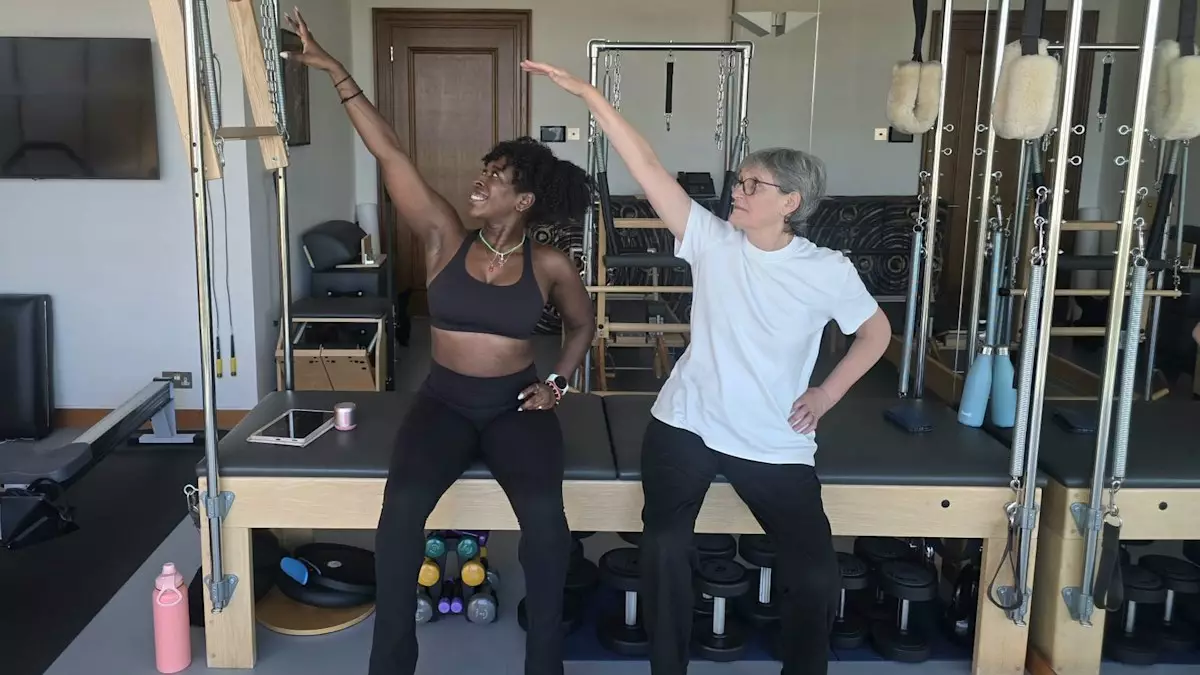When we think of dance classes, vibrant studios filled with youthful dancers, rehearsing elaborate routines often spring to mind. However, there’s a refreshing shift in the landscape of dance education, notably championed by individuals like Claudia Evans. At the age of 47, Evans has carved out a unique niche within the dance world by focusing her talents on the over-70s demographic through her Body2TheBeat classes. By integrating her years of experience from her dancing days on television, including the iconic Top of the Pops, she offers something profound: movement, joy, and vitality for an oft-neglected age group.
One of the most compelling testimonies to Evans’ approach comes from her student, 74-year-old Gill Simmonds. Unlike the stereotype of elderly individuals who may struggle with mobility, Simmonds embodies a spirited passion for staying active, declaring, “I want to keep active as I get older.” Her story resonates with many older adults who have held back on exercise due to busy lives or fears of the physical limitations of age. Simmonds’ determination is an inspiring reminder that it’s never too late to embrace fitness, even if it begins in the forties or beyond.
Simmonds’ newfound dedication to exercise isn’t a mere hobby; it’s a means of connection to her family and the younger generation. Describing her enthusiasm for engaging with her grandkids on the dance floor, she underscores a more profound realization that physical fitness encompasses the ability to participate fully in life’s joyful moments. This sentiment reflects a broader aspiration among seniors, where movement is not just about maintaining physical health, but also about preserving social connections and familial interactions.
The benefits of remaining active, especially as we age, extend beyond mere physical fitness. According to research from Harvard Medical School, cognitive health is significantly linked to physical activity. Engaging in tasks that require coordination, rhythm, and memory—like dance—facilitates cognitive vitality, potentially staving off ailments such as Alzheimer’s and dementia. Claudia Evans points out that the choreography in her classes acts as a form of mental and physical training, creating a connection between body and mind that is instrumental for learners of any age.
The structure of Evans’ classes is worthy of particular note. She begins with a thorough warm-up to prepare the body, transitions into choreographed movements, and concludes with gentle stretches. This variety not only keeps participants engaged but also underscores a holistic approach that considers balance, strength, and enjoyment. In Evans’ words, it’s not merely about exercise; it’s about cultivating a fun, vibrant environment where older adults can thrive.
As Simmonds candidly puts it, attending dance classes has transformed her perspective on aging. “Dancing is such fun, and Claudia is amazing,” she declares. This simple sentiment encapsulates the core of Evans’ mission: to create a space where older adults can experience joy and community through movement. The social aspect intertwined with the physical benefits offers a dual advantage—one that fosters friendships alongside health improvements.
Dance has always been more than just a sequence of movements; it’s an expression of life itself. For seniors, participating in dance allows them to reclaim a vibrancy that age may have obscured. It provides an avenue to express emotions, share experiences, and celebrate life through rhythm and motion. More than mere exercise, dance classes represent a crucial lifeline, fostering not only physical endurance but also emotional well-being.
Claudia Evans’ Body2TheBeat classes represent a pivotal movement in recognizing the needs and capabilities of older adults in fitness landscapes. By championing an activity that integrates self-expression, social interaction, and exercise, she paves the way for many to embrace not just aging, but thriving in their later years. The stories of participants like Gill Simmonds remind us that age is not a limitation but an invitation to empower others through the rhythm of life. Thus, as the world of dance continues to evolve, may it always remain inclusive, engaging, and celebratory, paving the way for all ages to find their beat.

